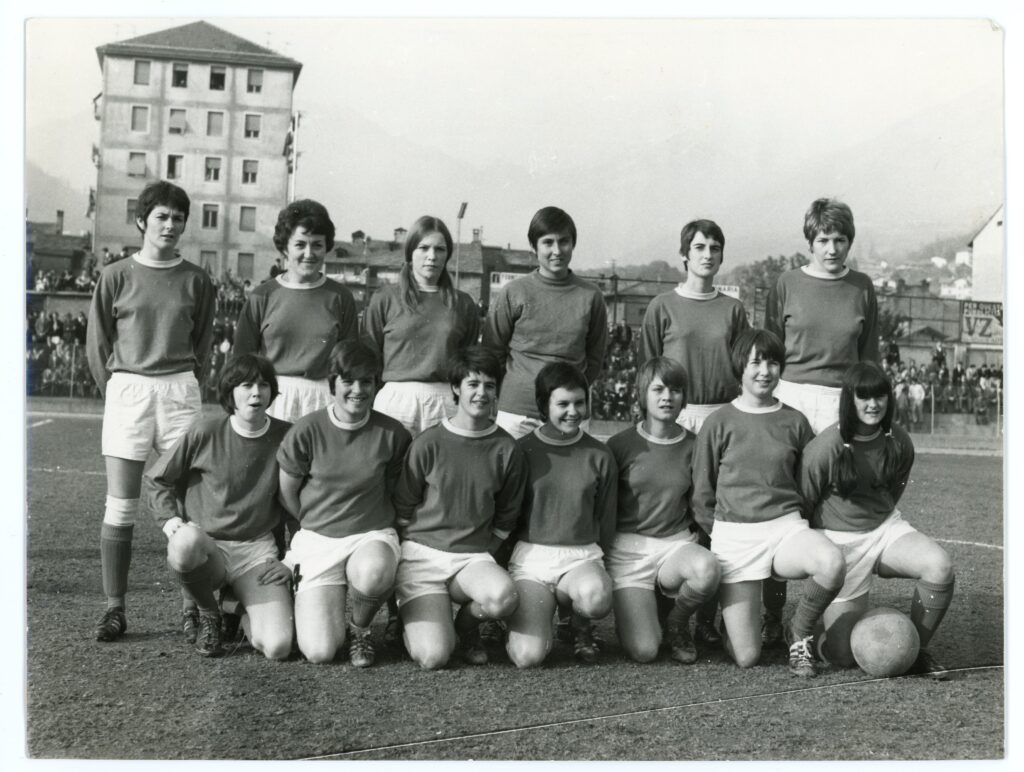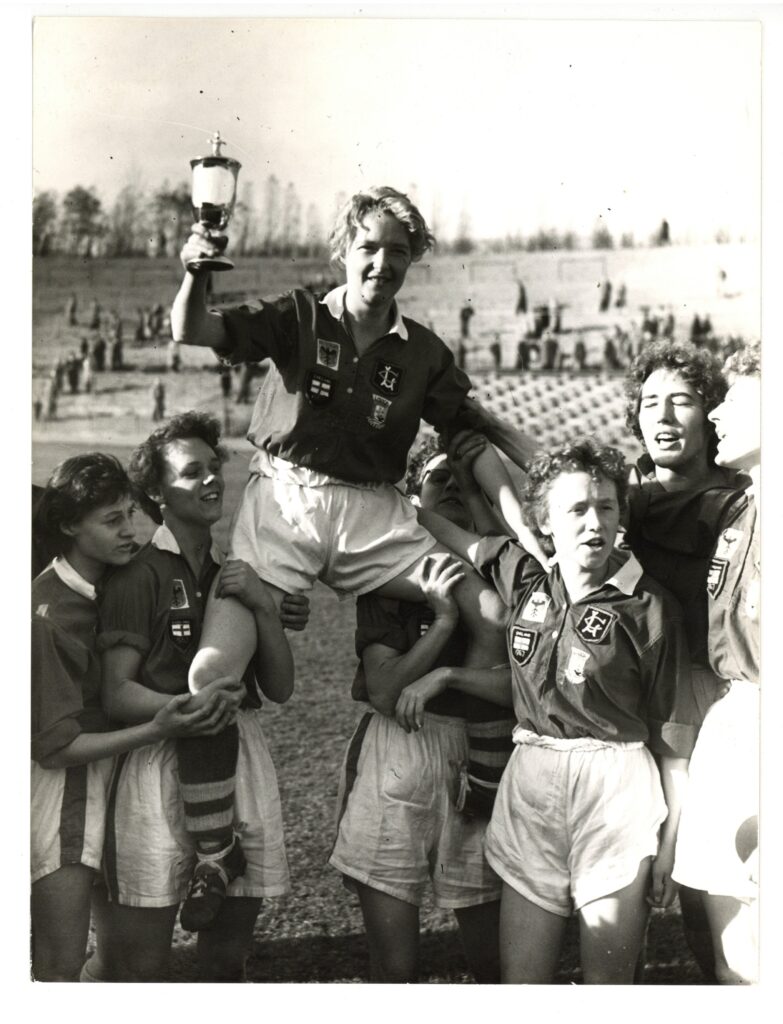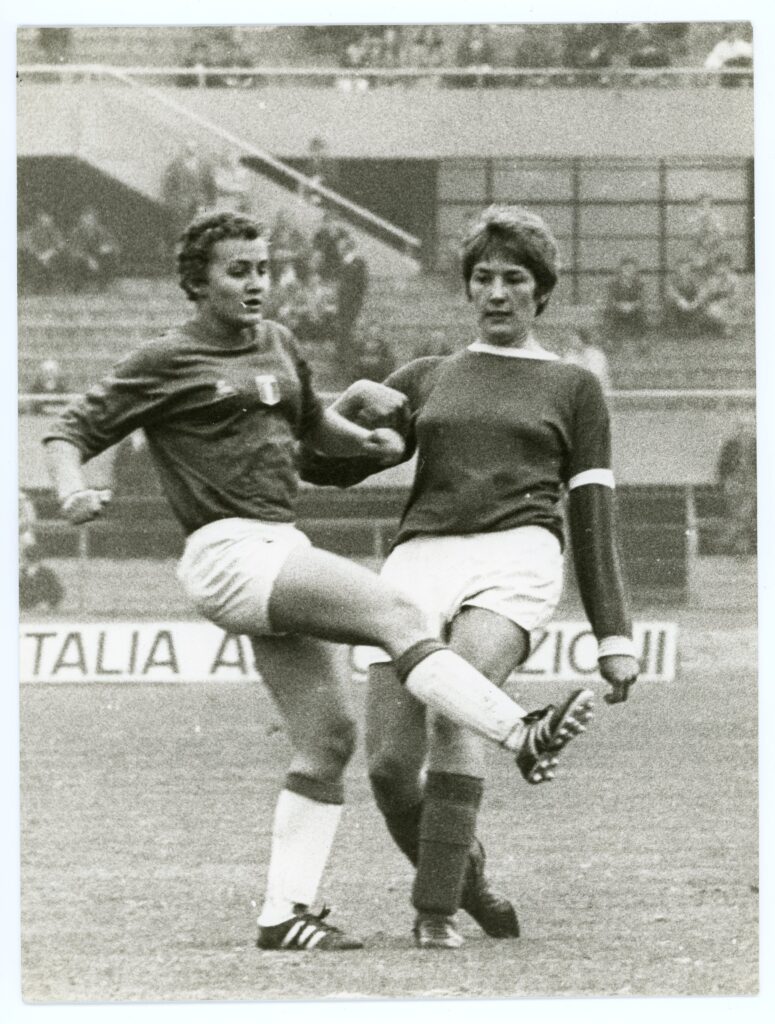“I was surprised my mum allowed me to go, I was such a young age.”
Paula Rayner, 2025
At nineteen years old, Michelle Agyemang is the youngest player in the England squad seeking to defend their UEFA Women’s European Championship title in Switzerland this summer. The first official UEFA tournament was organised in 1984, but prior to this both official and unofficial England sides represented their country in precursor tournaments.
One of these was the 1969 Coppa Europa per Nazioni, held in Italy, and Paula Rayner was part of the unofficial England squad. She celebrated her fourteenth birthday on the 27 October, and just a few days later, on the 1 November, she played in England’s 4-3 defeat to Denmark.

With the Women’s Euros upon us, we have decided to explore the history of early European tournaments involving sides representing England, both unofficial and official. The 1969 Coppa Europa per Nazioni wasn’t the first English engagement with European football. The 1920s had seen several English sides, like Dick, Kerr Ladies FC and Stoke Ladies, visit mainland Europe, as did Manchester Corinthians in the 1950s. The Corinthians also won the Women’s European Cup Competition in Berlin in 1957.

The 1960s was a key period for women’s football and saw the foundation of International Federation of Feminin Football (FIFF) which was founded by the backers of professional women’s clubs in Italy. FIFF was not part of UEFA and attracted the latter’s hostility for promoting what UEFA saw as unaffiliated football. But at this time UEFA did not promote or organise women’s tournaments.
Instead, FIFF organized a series of European and World tournaments that played an important part in the development of women’s football. In 1969 the Coppa Europa per Nazioni was held in Italy. In 1970 the first Copa Del Mundo (World Cup) was held, again in Italy, and this time with sponsorship from Italian drinks company Martini Rossi. All of this culminated in the 1971 Copa Del Mundo, again sponsored by Martini Rossi, and held in Mexico City.
The final between Denmark and Mexico attracted an attendance of 110,000 – still a record for a women’s football game. Paula Raynor was part of the England squad that participated in the tournament.
Women’s football has only just been recognised by the English FA in 1969, so no official Women’s Football Association sides competed in these tournaments. But England were represented in all three tournaments by sides led by Harry Batt, manager of Chiltern Valley Ladies. Professor Jean Williams explains in The History of Women’s Football (2021) that:
During 1969 a Federation of Independent European Female Football (FIEFF) was formed and invited Harry Batt to put together an England team to attend a four-team representative tournament called the Coppa Europa per Nazioni (women) in Novora, Aosta and Turin during November that year. It is important to remember that at the same time Harry was a member of the WFA Committee, and so well placed to understand what was happening domestically and internationally in women’s football. He had formed Chiltern Valley in 1968-69 season because his wife, June, had begun playing football and he wanted to support her interests. Things grew quickly from there. (p.97)
Harry Batt put together a side composed of players from several clubs, with June attending as a chaperone. We spoke to Paula Rayner, and she very kindly shared the following list of squad members.
Southampton: Barbara Birkett, Sue Buckett, Dot Cassell, Jill Long, Sue Lopez
Luton Ladies: Mary Blake, Tina Oliver, Sue Tungate
Chiltern Valley Ladies (Luton): Val Cheshire, Paula Rayner, and possibly Chris Salmon
Kays Ladies (Worcester): Cale, Gail Gunnell
Of the Southampton players, Sue Buckett, Dot Cassell, and Sue Lopez would all go on to play for England. Lopez wrote about the tournament in Women on the Ball: A Guide to Women’s Football (1999), in which she reflected on team’s composition:
For some unknown reason, Harry Batt failed to select players from the top teams, Fodens and Manchester Corinthians. From our point of view, with just two or three players, such as Sheila Parker, Joan Trench, and Lesley Caldwell, we would have achieved better results and received some positive publicity.
None the less, the tournament was an adventure for the players, and which would have an important impact on Lopez in particular:
We travelled to Italy by train and ferry, where we spent most of the time sewing Union Jacks on to our tracksuits in an attempt to ‘patch’ on some sense of unity and identity.
We arrived in Turin late in the day and travelled up into the mountain area of Aosta by coach. We shared the hotel accommodation with the Danish team, represented by the club Femina and, in conversation with the players, we began to discover how advanced women’s football was in Europe; how widely it was played and how it had been allowed to flourish.
Our first match was against Femina; we narrowly lost 4-3. It was unfortunate because we could have equalised with a penalty right at the end. We went onto beat France easily in the play-off for third and fourth place. Italy finally beat Denmark 3-1 in the final.
Despite not being successful as we had hoped, it was a thrill to play foreign opponent on some of the best pitches in Italy. All the grounds were excellent and were the same ones used by the men’s professional teams. The crowds of 10,000 plus were beyond anything we had experienced. We felt elated to have been part of such an exciting tournament, after the small-scale events in England. It was how we imagined the professional male players were treated, with nice hotels, beautiful venues and respect, especially from the press. I personally enjoyed the lively atmosphere, the enthusiasm and friendliness of Italian women’s football.

Lopez was either being very modest, or had genuinely forgotten that she has scored a hat-trick in the game against Denmark/Femina. As a result of her skill, and the attraction of playing in Italy, Lopez soon agreed to sign for Roma and moved to Italy for several years.
Paula Rayner and Valeire Cheshire went in a different direction. They went onto play for further unofficial England sides organized by Harry Batt, including the 1971 Women’s World Cup in Mexico. Two of their opponents from 1969, Solveig Hansen and Helene Østergaard Hansen, were part of the Danish team that beat Mexico in the final.
Some 56 years after the tournament, Paula can still recall some of her experiences. Looking back to when they the team stayed in the city of Aosta, near the Italian Alps, she told us that, “the most vivid memory I have has nothing to do with football…I remember waking up, and thinking “what is that noise?” and it was the cows coming down from the mountains with bells round their necks.’ Also memorable was travelling to the city of Turin the next day “and being told that you were going to play in the stadium that Juventus played in, there was quite a big crowd there too, I was quite lucky if there were four people on the sidelines watching us playing football at home.”
For many people, playing before a large crowd might appear overwhelming. But for Paula, it wasn’t a problem. “I wasn’t daunted by it; I just loved playing football,” a sentiment shared perhaps by many of today’s England players.
Sources
Paula Rayner, interviewed 2025.
http://www.englandfootballonline.com/matchrsl/MatchRslTmWompg1.html
Sue Lopez, Women on the Ball: A Guide to Women’s Football (1997)
Jean Williams, A History of Women’s Football (2021)
Jean Williams, Legendary Lionesses: The England Women’s Football Team, 1972-2022 (2023)